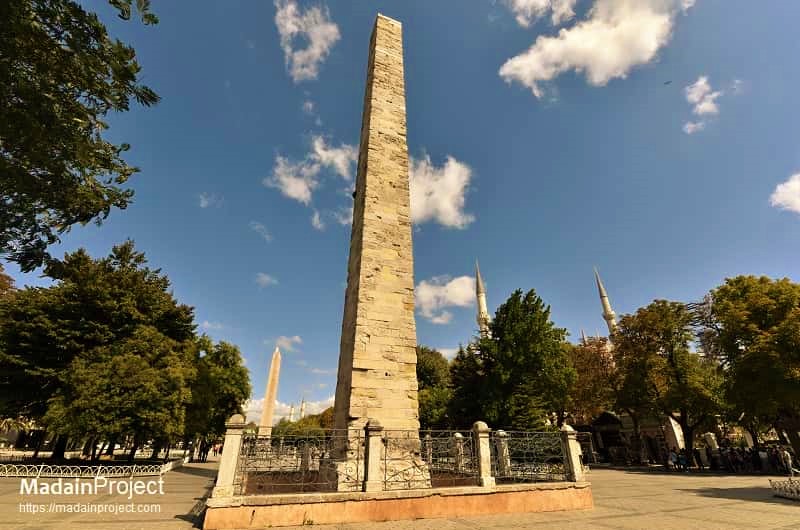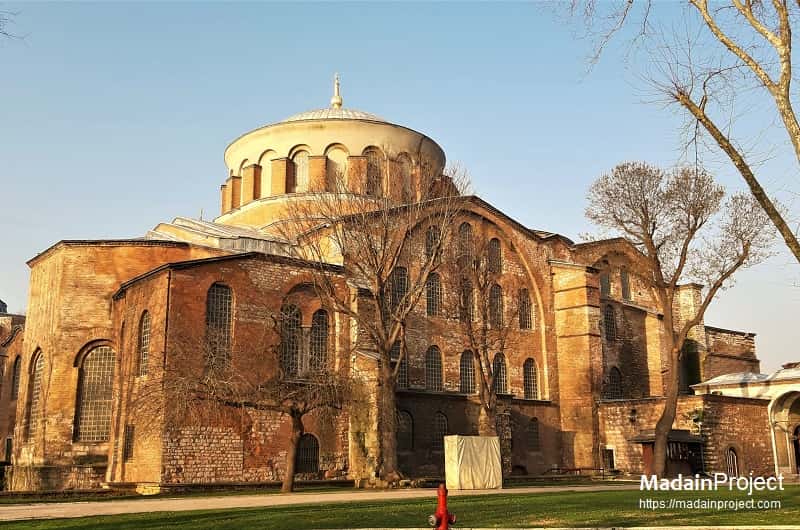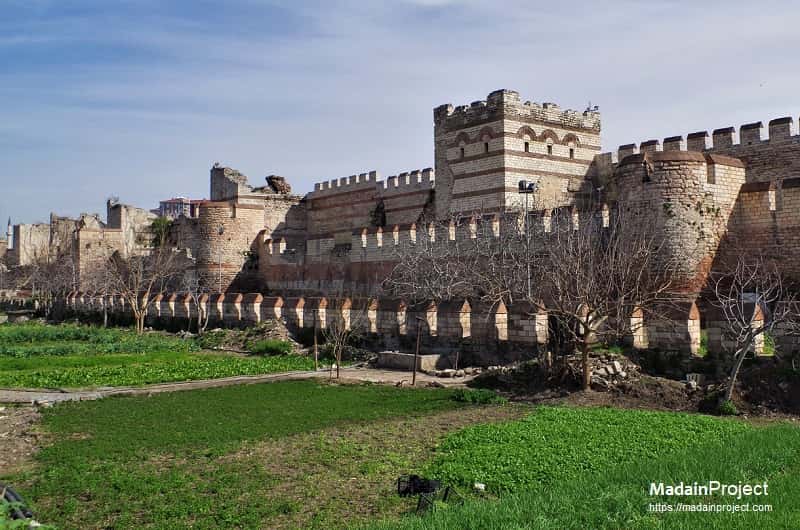Ancient Istanbul formerly known as Byzantium and Constantinople, is the most populous city in Turkey. Founded under the name of Byzantion (Βυζάντιον) on the Sarayburnu promontory around 660 BCE, it was reestablished as Constantinople in 330 CE, Ottomans conquered the city in 1453 CE and transformed it into an Islamic stronghold and the seat of the Ottoman Caliphate.
Istanbul, a city that straddles two continents, Europe and Asia, has a rich and multifaceted history that spans thousands of years. Originally founded as Byzantium, the city's origins can be traced back to the 7th century BCE. It became part of the Roman Empire in 196 CE and later served as the capital of the Eastern Roman Empire, known as Byzantium, until the city's reestablishment as Constantinople by Emperor Constantine the Great in 330 CE.
Throughout the Byzantine era, Constantinople flourished as a cultural and economic hub. The city's strategic location facilitated trade routes and cultural exchange between the East and the West. The Hagia Sophia, a monumental structure built during this period, stood as a symbol of Byzantine architectural and artistic achievement.
In 1453, Constantinople underwent a transformative moment when it was conquered by the Ottoman Turks under the leadership of Mehmed II, marking the end of the Byzantine Empire. The city was subsequently renamed Istanbul and became the capital of the Ottoman Empire. Istanbul thrived as a center of commerce, culture, and Islamic civilization, showcasing the Ottoman architectural prowess through landmarks like the Blue Mosque and Topkapi Palace.
The 20th century brought significant changes to Istanbul as the Ottoman Empire dissolved after World War I. Mustafa Kemal Atatürk, the founder of modern Turkey, established Ankara as the new capital in 1923. Istanbul, however, remained a vibrant cultural and economic center.
In recent decades, Istanbul has undergone rapid urbanization and modernization. The cityscape is a blend of historic sites and contemporary structures, reflecting its dynamic evolution. The Bosporus Strait, separating the European and Asian sides of the city, remains a vital maritime passage and a defining element of Istanbul's geography.
Today, Istanbul stands as a metropolis that bridges the ancient and the modern. Its diverse population, cultural heritage, and architectural marvels continue to attract millions of visitors annually. The city's history, encapsulated in its streets, monuments, and traditions, serves as a living testament to the layers of civilizations that have shaped Istanbul into the dynamic and cosmopolitan city it is today.

Originally built as a cathedral during the reign of Byzantine Emperor Justinian I in 537 CE, Hagia Sophia, which means "Holy Wisdom" in Greek, served as the principal church of Eastern Orthodoxy for nearly a thousand years. Its massive dome and intricate mosaics showcased the grandeur and sophistication of Byzantine architecture. Archaeologically, Hagia Sophia has revealed layers of history through various renovations, alterations, and restorations. Read more

Topkapi Palace served as the primary residence for Ottoman sultans for nearly four centuries. The palace complex, with its sprawling courtyards, intricate pavilions, and lush gardens, reflects the architectural brilliance of Ottoman design. Each successive sultan contributed to the expansion and embellishment of the palace, resulting in a rich tapestry of styles, from the Byzantine-influenced architecture of the earlier periods to the distinctive Ottoman elements. Read more

The Sultan Ahmed Mosque, more commonly known as the Blue Mosque, is a jewel of Islamic architecture situated in the heart of Istanbul, Turkey. Commissioned by Sultan Ahmed I and completed in 1616, the mosque stands as a magnificent testament to the grandeur of the Ottoman Empire during the early seventeenth century CE. The architectural brilliance of the Blue Mosque reflects the influence of both Ottoman and Byzantine styles. Read more
The Süleymaniye Complex (Turkish: Süleymaniye Külliyesi) is an Ottoman imperial mosque-mausoleum complex located on the Third Hill of Istanbul, Turkey. Süleymaniye Külliyesi is a multi-functional complex founded by Sultan Süleyman I in Istanbul. In terms of size and visual impact, the Süleymaniye represents the apex of Ottoman imperial architecture executed in the capital city. The complex is laid out on an irregular plot of land conforming to the topography of the site, which was terraced and uneven.

Originally erected by Constantine VII in the tenth century CE, the Walled Obelisk is a remnant of a series of ornate and towering monuments that once adorned the Hippodrome, the sporting and social center of Byzantine Constantinople. The obelisk consists of several large marble blocks, displaying intricate carvings and reliefs on its sides. Read more

The Obelisk of Theodosius, an ancient Egyptian monument transplanted to Constantinople by the Byzantine Emperor Theodosius I, stands proudly in the historic Sultanahmet Square of Istanbul. This towering obelisk, crafted from pink granite, serves as a striking reminder of the cross-cultural exchanges that characterized the ancient world. Read more

Hagia Irene, situated within the historic complex of Topkapi Palace in Istanbul, is an ancient church with a rich history spanning over a millennium. Originally built by Emperor Constantine I in the fourth century CE, Hagia Irene predates its more famous counterpart, Hagia Sophia, by several decades. Read more
Located at the confluence of the Bosphorus and the Black Sea, to the north of Joshua's Hill, in Istanbul, it is the last Byzantine castle standing in Turkey. Yoros also known as the Genoese Castle, it was intermittently occupied throughout the course of the Byzantine Empire. It was first conquered by Ottoman forces in 1305, but retaken by the Byzantines shortly thereafter. Bayezid I took the castle again in 1391 while preparing for his siege of Constantinople.

The initial fortifications date back to the fourth century CE during the reign of Emperor Constantine the Great, who founded the city. However, it was Emperor Theodosius II in the fifth century CE who significantly enhanced the walls, constructing the Theodosian Walls that would become the primary line of defense for the city. Read more

The Süleymaniye Mosque, an architectural masterpiece crowning one of Istanbul's seven hills, was commissioned by Sultan Suleiman the Magnificent and designed by the renowned architect Mimar Sinan, the mosque was completed in 1557, making it one of the oldest and most significant mosques in Istanbul. Read more

Constructed during the reign of emperor theodosius ii in the 5th century, these formidable fortifications were built to defend constantinople, the capital of the byzantine empire. Stretching approximately 6.5 kilometers from the sea of marmara to the golden horn, the walls served as a robust defense system against various invaders throughout the byzantine era. Read more

The Basilica Cistern, an extraordinary underground reservoir located in the heart of Istanbul, reflects the ingenuity of Byzantine engineering and stands as a hidden marvel beneath the city's bustling streets. Commissioned by Emperor Justinian I in the 6th century, this vast subterranean cistern served as a crucial water storage facility for the Byzantine capital, Constantinople. Read more

The Sultan Ahmed Square, also known as sultanahmet square, is a historic and vibrant public space in istanbul. surrounded by some of the city's most iconic landmarks, the square serves as a central hub for both locals and tourists alike. Read more

Constantine's column, also known as the burnt column (çemberlitaş sütunu in turkish), is a prominent ancient monument situated in istanbul, turkey. Erected by Roman emperor constantine the great in 330 CE, the column holds historical significance and stands as a symbol of the city's rich past. Read more
Signup for our monthly newsletter / online magazine.
No spam, we promise.